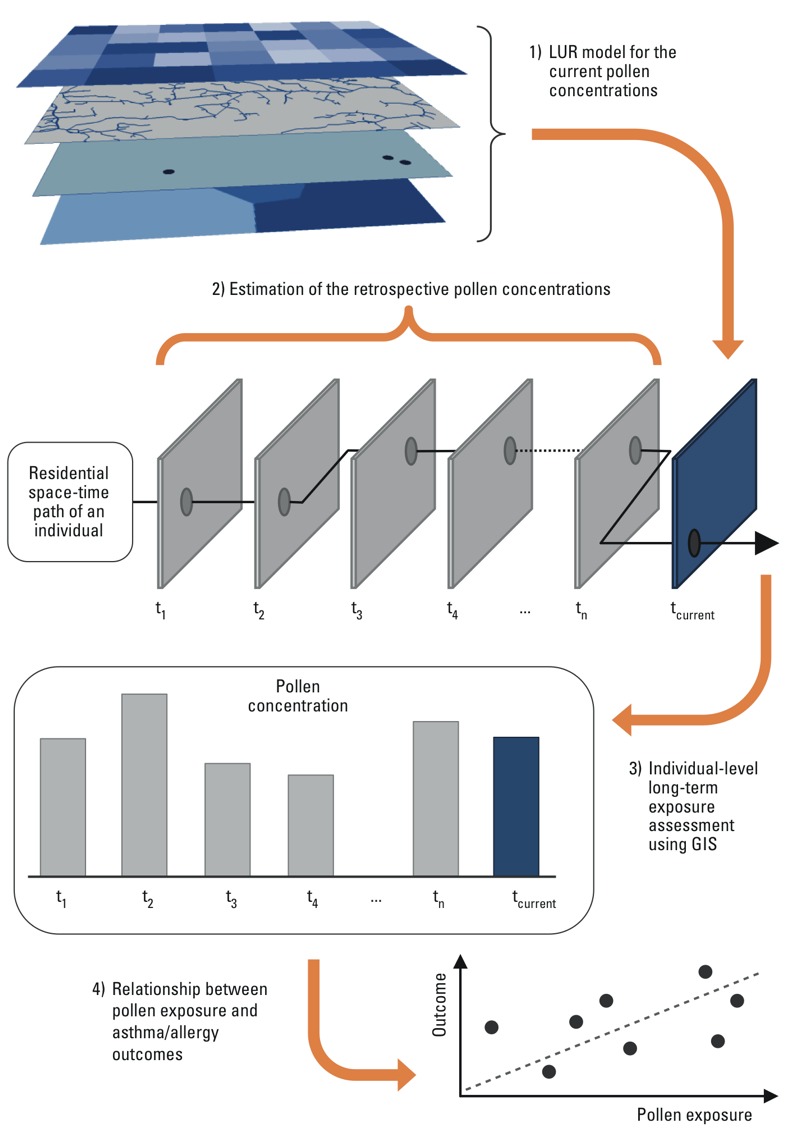Figure 2.

Application of the land use regression (LUR) outcomes (e.g., average seasonal concentration of pollen) in long-term and lifetime exposure assessments. First, the LUR approach is used to produce a raster model of pollen concentrations in the current environmental conditions (tcurrent). Second, the retrospective pollen concentrations (t1…tn) are predicted using data describing the past environmental conditions (e.g., historical land use and remote sensing data) (Gulliver et al. 2013). In the estimation of retrospective concentrations, long-term (permanent) pollen collectors are used. Third, geographic information system (GIS) tools are used to compute individual (e.g., cohort members) exposure based on residential history data at applicable spatial resolution (Richardson et al. 2013). Fourth, the results of the previous step are used in allergy and asthma explorations.
